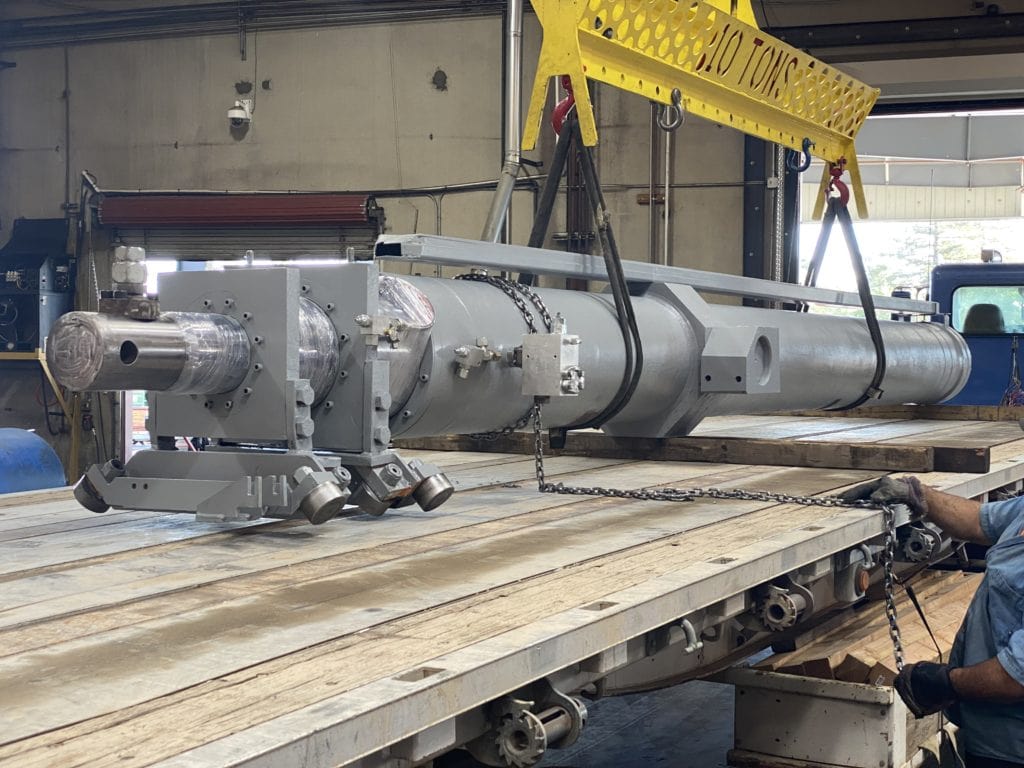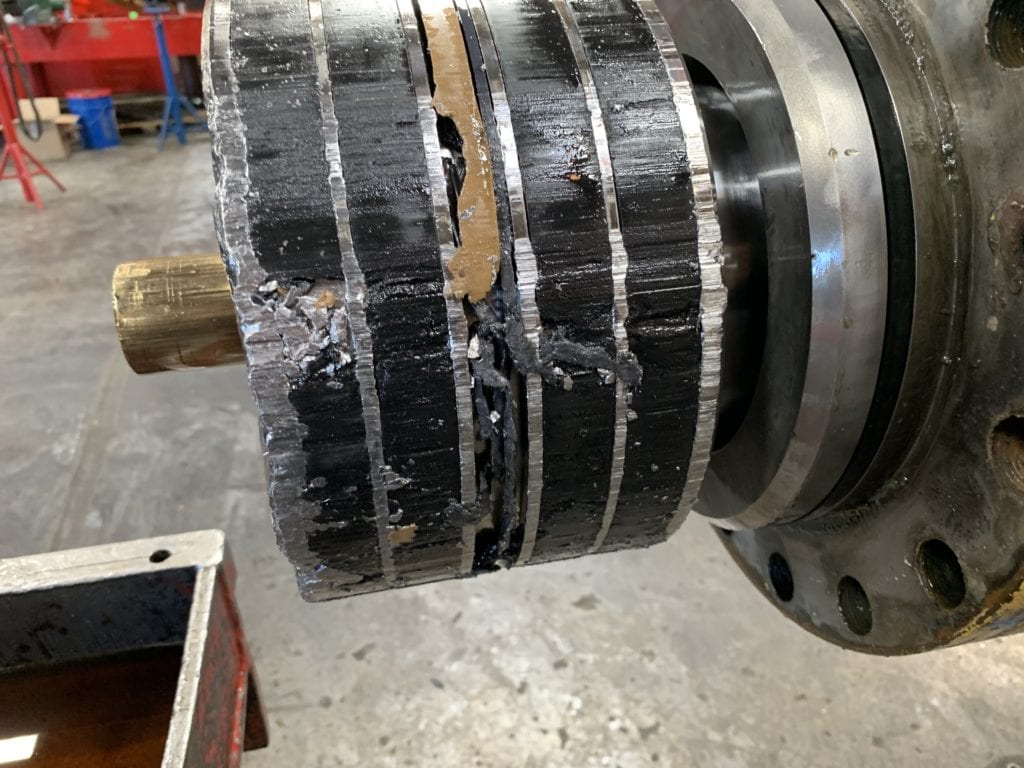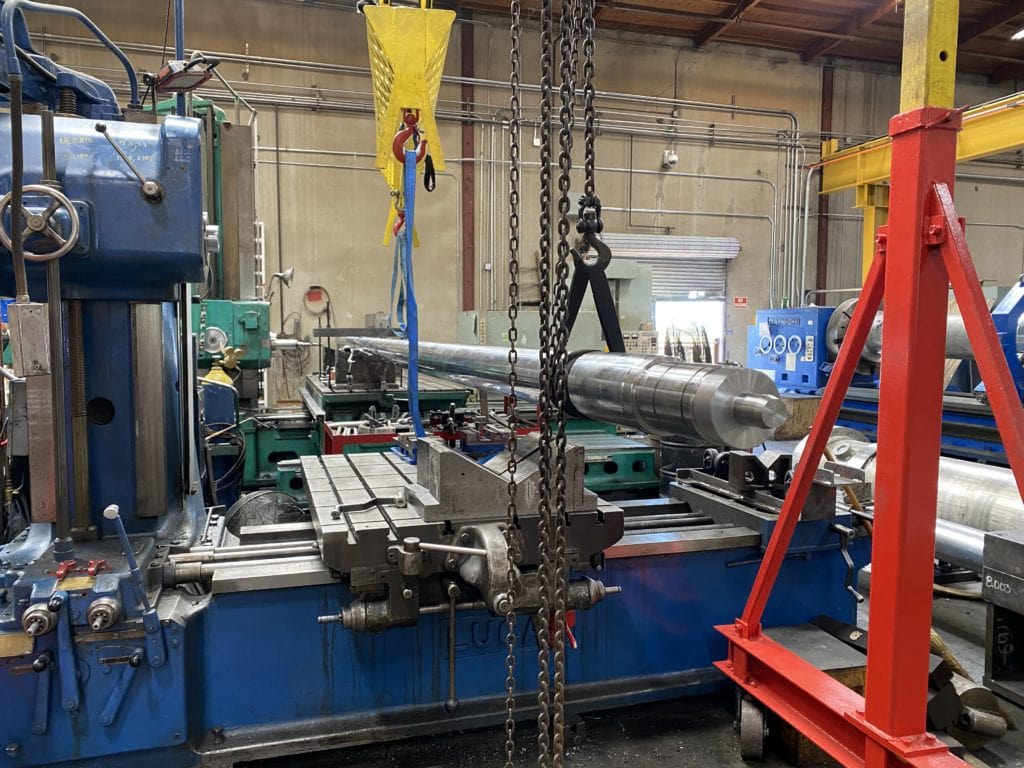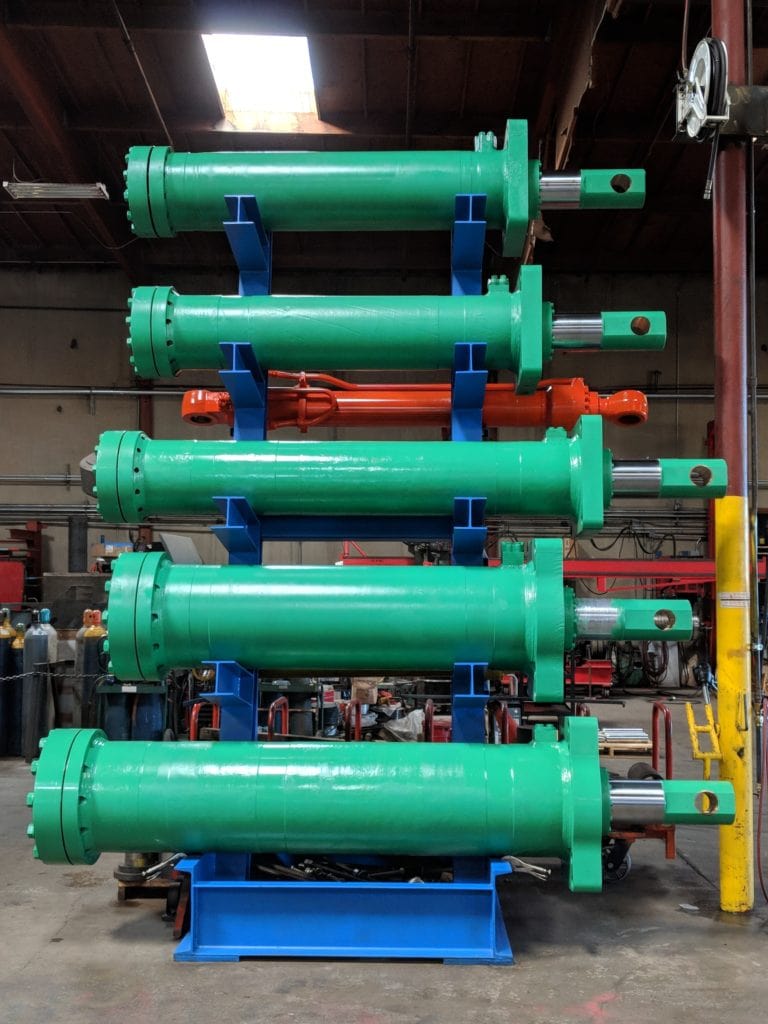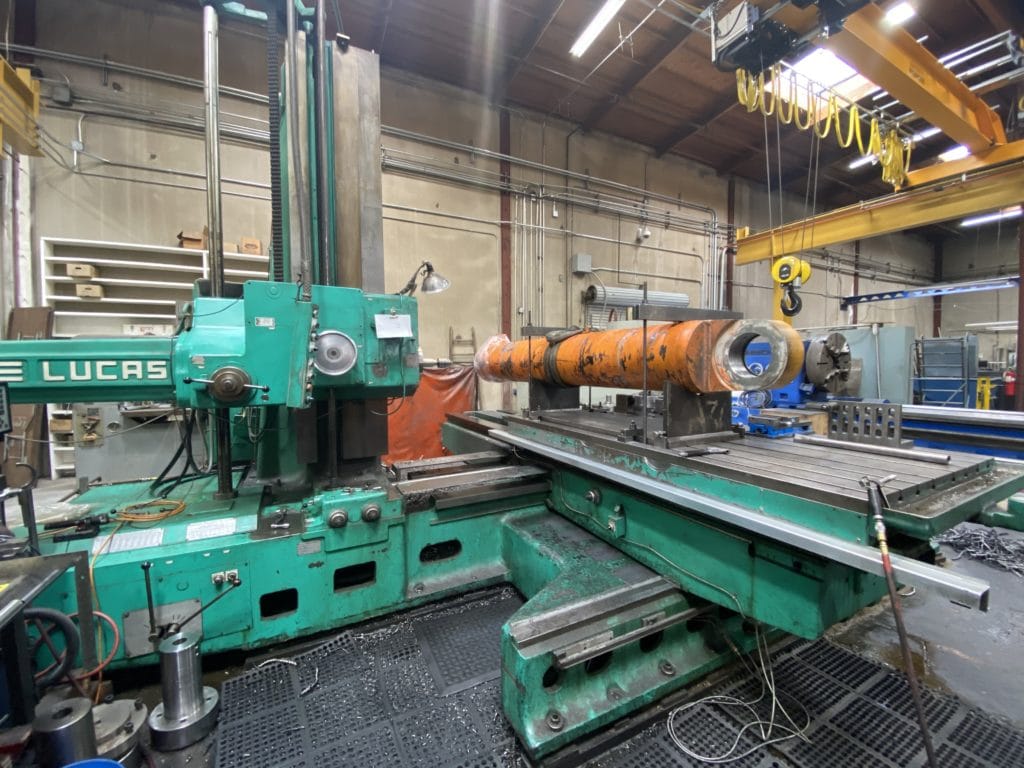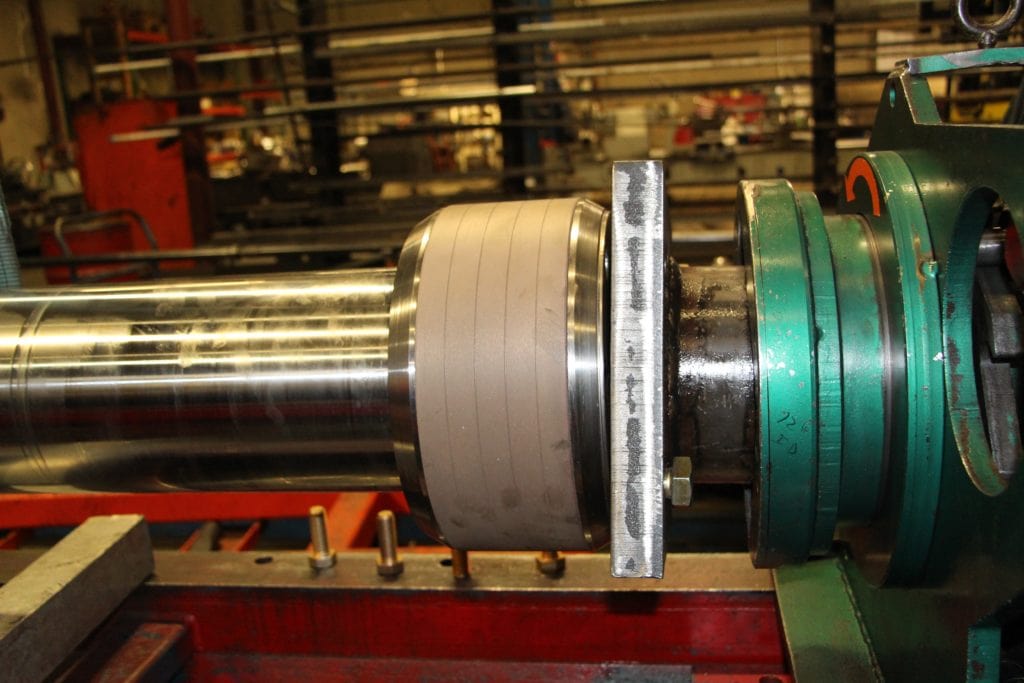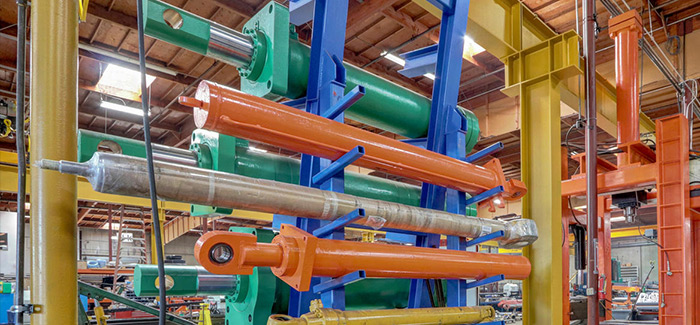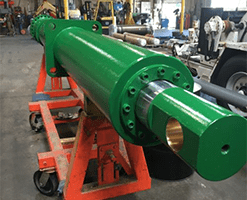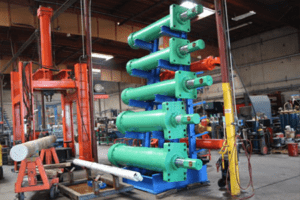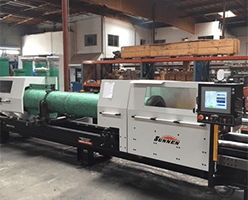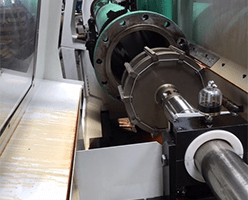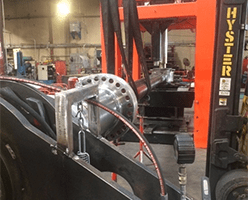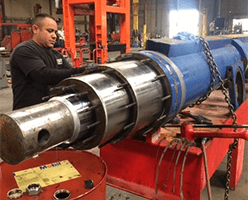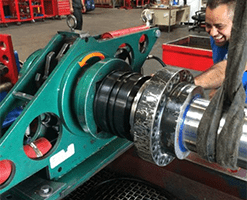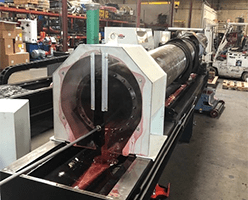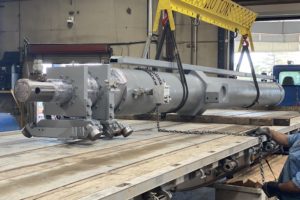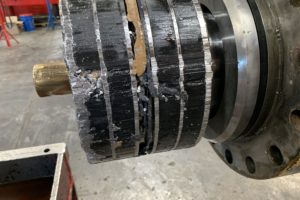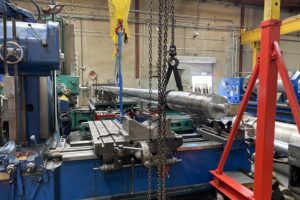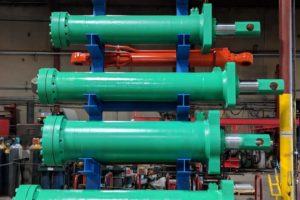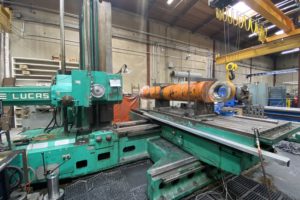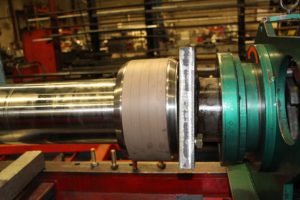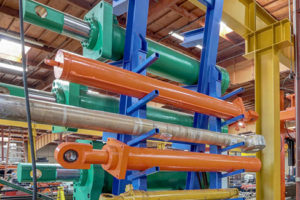Hydraulic systems work based on the principle of Pascal’s law of fluid pressure, which states that applying pressure to a fluid causes an equal amount of pressure exertion in each direction throughout the fluid. Hydraulic cylinders, also know as rams or actuators, are suitable for applications that require strong pulling or pushing forces.
During the industrial revolution, hydraulic cylinders were prevalent in manufacturing and production applications in factories. Now, hydraulic cylinders are used in equipment across a wide range of industries such as construction, offshoring, mining, and manufacturing.
How Does a Hydraulic Cylinder Work?
According to Pascal’s law, force is equal to pressure multiplied by area. Within a hydraulic system, pressure is supplied by the Hydraulic Power Unit (HPU). The size of the hydraulic piston and rod determines the working area. The force that the cylinder can exert is equal to the hydraulic cylinder’s HPU pressure rating, multiplied by the working area.
Understanding the force a hydraulic cylinder can exert is essential for determining the amount of weight the cylinder can push or pull. 3,000 PSI to 10,000 PSI or 210 to 690 bar is the standard range for most hydraulic cylinders. The average pump is closer to 3,000 PSI or 210 bar. Depending on the size of the cylinder, a pump can lift an unlimited amount of weight, but the valves, seals, and cylinder design will require adjustment to keep up with pressure increases. The speed of the cylinder operation depends on the HPU’s flow rate and the working area. The larger the working area or capacity of the cylinder, the more flow required to move it at the same rate.
Types of Hydraulic Cylinders
There are many types of hydraulic cylinders, including:
Single Acting Hydraulic Cylinders
Single acting hydraulic cylinders are used when either a push or a pull force is required, but not both. The hydraulic fluid only acts on one side of the piston. This type of cylinder relies on an external force to move in the opposing direction, such as a spring or gravity.
Double Acting Hydraulic Cylinders
Double acting hydraulic cylinders provide two-directional hydraulic fluid actions to operate the piston, providing both advancement and retraction of the piston rod.
Telescopic Cylinders
Telescopic cylinders can increase the distance of a single stroke using a cylinder within a cylinder. The maximum distance that a cylinder can movesin one direction is called the stroke. Applications that require greater stroke length while keeping a small retracted length rely on telescopic cylinders, such as fabrication applications and dump trucks.
Telescopic cylinders can have double or single acting designs, but there are potential problems with double acting cylinder designs. Changes in volume size for the different cylinder stages can cause sudden speed changes. To combat this, specialist engineering can create telescopic cylinders that maintain constant speeds.
Jack Cylinders
Jack cylinders offer a mobile design that comes in various sizes. Typically, one hand pump can be used with multiple cylinder sizes giving companies the ability to select the best cylinder for each application. Jack cylinders also don’t require a mount and can typically be placed on the floor. There are several common lifting weights for jack cylinders, including 50 ton, 20 ton, 10 ton, and 5 ton options.
Companies that do not frequently use a hydraulic cylinder may find it favorable to rent a jack cylinder for short-term applications. The mobility and standard sizing of the jack cylinder make it easy to rent a unit from a hydraulic cylinder company.
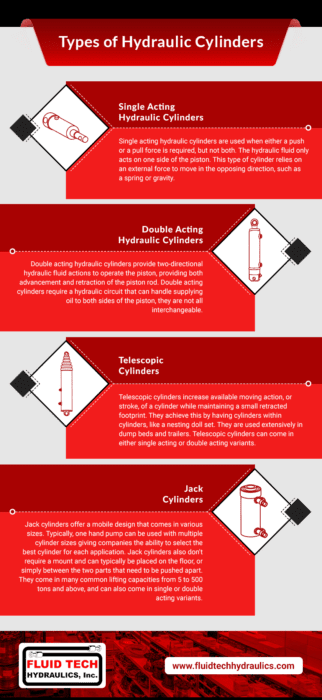
Rely on Fluid Tech Hydraulics, Inc. for Your Hydraulic Cylinder Solutions
Fluid Tech has one of the largest and most complete facilities for hydraulic cylinder repair on the West Coast. We provide a broad range of solutions, from resealing cylinders to designing and manufacturing custom cylinders based on your specifications.
We have lathes with up to 40’ between centers and 6’ in diameter. Our cylinder hones can accommodate up to 33’ in a single pass and can hone up to 40’’ in diameter, with a higher honing capacity expected soon.
We have a broad inventory of hydraulic seals, along with standard and metric chrome bar. We can manufacture pistons, rod bearings, and glands from steel, aluminum, cast iron, and bronze with a quick turnaround time. Contact us today to learn more about our capabilities and solutions for your hydraulic cylinder needs.











